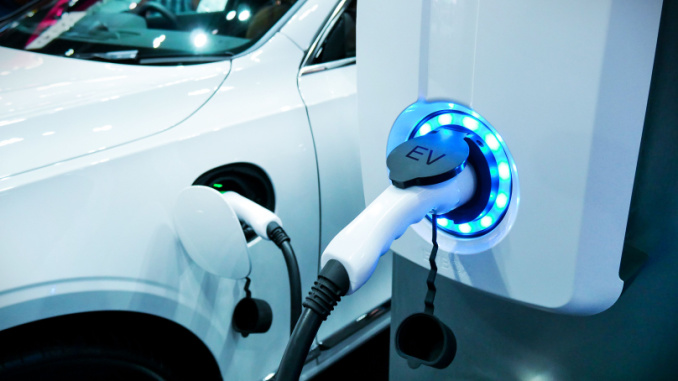
Are Electric Vehicles the Solution to Climate Change? Or Is It a Government-subsidized Scam at Over $30,000 per Car?
By Terence E Winters, PhD |
James Dyson, Britain’s multi-billionaire version of Elon Musk, announced in 2019 that he was terminating his private company’s project to design, build, and market “a radically different” electric car (EV). The project, housed in its own isolated facility about 100 miles from London, had cost him about $1 billion over 4 years and had employed over 600 engineers and support people. This was a difficult decision for him to make since he is an engineer and has made his money on electrically powered devices, so EVs were in his sweet spot, just another electric device.
Dyson owns the company and so he had no shareholders that he had to explain his actions to. He simply said, in an exclusive interview with Fortune, “It just wasn’t commercially viable” since he would have had to price the electric car below his cost. The article in Fortune’s November 29, 2019 edition, “James Dyson’s Electric Shock” is fascinating reading and concludes that Dyson is that rare executive who combines blue-sky dreaming with steely-eyed financial discipline.
Add this to the fact that electric cars were common in the early 1900s but died out because they could not compete with gasoline cars, and we have to ask: what is going on here? While Elon Musk was getting Tesla to a market valuation of over a trillion dollars, James Dyson was backing away from the same field and saying it was not commercially viable. One of them is wrong, so let’s review the pros and cons of electric vehicles and you, dear reader, can decide.
First, some key advantages of EVs over gas/diesel cars (ICE= internal combustion engine):
-
- Good performance, especially acceleration.
- Quieter than ICEs.
- Classed as zero emission vehicles with preferential treatment on our roads such as use of HOV lanes, which is very useful in rush hours. But this ignores the emissions from manufacturing EVs, especially the battery, and from generating the electricity to power them.
- In most states, EVs do not pay annual license plate fees and do not contribute to the building or maintenance of roads, as ICE vehicles do, through the gas tax. This is another subsidy, worth at least $1,000 per car per year. But we will not count this subsidy.
- Cheaper to service and to fuel. But this has significant caveats. See later.
- Perceived as replacing ICE cars, thereby helping to minimize climate change. See later.
There has been much written on this subject so here are some facts about EVs that are not well known:
1. Subsidies. State and federal governments each give a tax credit subsidy to the original owner for buying a new EV. The total varies by state but, combined, it is usually about $10,000 per car, subject to conditions. But there are numerous other subsidies granted to either the EV owner, the EV manufacturer, the battery manufacturer, or the charging station owner. They take the form of direct tax credits, grants, and other payments that can be taken whether or not any tax is due. It is difficult to pin these down and convert to a number such as amount per car, especially with the array of additional subsidies in the recent IRA Bill, but the total is at least $30,000 per car and probably much more. The tangled web of these subsidies suggests that the government may not want the public to know the true extent of its largesse towards EVs. Let’s list some of them:
-
- Carbon credits granted annually to Tesla and other EV companies because they are classed as “zero emission vehicles” (they are not – more about that later). These credits by law must be bought by other car companies as a penalty for them continuing to produce ICE cars. You have to look hard for this subsidy in Tesla’s financial statements, but it is there – look for “automotive regulatory credits” in the operating statements. They have amounted to a total of $4.8 billion of cash for the 3 years, 2020-22 (the 2022 figure is estimated based on 9-month numbers). Tesla does not have to pay this back. It is a straight cash subsidy from Tesla’s ICE competitors, mandated by the U.S. government. This is another $3,000 to $5,000 per car and has made Tesla profitable. Other EV manufacturers get similar carbon credits.
- EV subsidies in the Inflation Reduction Act (IRA):
- The $7,500 federal tax credit subsidy to the owner of a new EV has been extended to a wider range of vehicles and consumers, with income, foreign source, and vehicle purchase price limits (that can be worked around). No doubt states will follow suit with their subsidies. Plus, this federal tax credit has been extended to the purchase of a used EV up to a maximum of $4,000. If states follow, then this used EV tax credit will be about $5,000 per car. The result is that the same car will be subsidized with this owner tax credit at least twice, when new and used, for a total of about $15,000 per vehicle, or more if it is sold again.
- Tax credits to build over 500,000 charging stations all over the USA for the next 10 years. This is limited to $100,000 per “alternative fuel refueling property” so will cost $50 billion over the 10 years. This is an indirect subsidy to EVs since it would otherwise be paid by an increase in the price of the electric power purchased by the EV owner. If this is spread over 5 million EVs, it is at least $10,000 per car, but let’s call it $5,000 per car. But the way the IRA language reads, it could be interpreted as $100,000 per charging bay in the charging station in which case, it would be very much more. A news release by Mercedes Benz on January 4, 2023 says they will be building 400 EV charging stations in the USA containing 2,500 charging bays at a cost of $1.05 billion. That is $2.5 million per station and about $420,000 per charging bay.
- Depending on how the language in the Act is interpreted, there are grants for a wide variety of “green” projects that include batteries and EV related projects. For now, we will not include these potential subsidies.
- Tax credits to fleet owners who convert their commercial vehicles to EVs. These are a minimum of $7,500 per vehicle and rise to $40,000 per vehicle for vehicle weights over 14,000 pounds.
- For states and municipalities, grants and rebates of 100% of the value of school buses, garbage trucks, and the like, converted to EVs.
- These last two items for commercial and municipal vehicles combined are potentially the largest subsidy of them all, but it is difficult to convert it to a per vehicle number for our purposes. Let’s just count it as $7,500 per vehicle for the two combined, although it will be a great deal more.
- Battery manufacturer subsidies. These are in the IRA, the 2021 Infrastructure Bill, and the CHIPS and Science Act and are estimated to amount to about $142 billion of direct subsidies over the next 10 years. Not all of this is for EVs, but they will get the biggest share through tax credits to cover 30% of EV battery manufacturing costs. In addition, companies making the battery components in the USA will get a tax credit of 10% of their costs. That adds up to 40% of the cost of battery production. If we assume that an EV battery costs about $10,000 to produce, then this is a further subsidy of about $4,000 per car, and double that if the car needs a new battery.
All these subsidies are cash paid, by various routes, to either the buyer, the dealer, the vehicle manufacturer, the battery maker, states and municipalities, fleet owners, or charging stations. All of it comes from you, dear taxpayer. I doubt that Mr. Dyson figured these gargantuan subsidies into his decision, but could it have changed his mind? And did Mr. Musk count on these government handouts before he founded Tesla – this makes him one of the largest recipients of government largesse?
There are probably more EV subsidies buried in the IRA and other legislation that I have missed, but let’s add up these that I have identified with certainty, all on a per EV basis:
| Consumer new EV purchase state and federal tax credits: | $10,000 |
| Consumer used EV purchase tax credit: | $5,000 |
| Carbon credits: | $4,000 |
| Charging station subsidy: | $5,000 |
| Commercial fleet conversions to EVs: | $7,500 |
| Battery maker subsidy: | $4,000 |
| TOTAL PER EV | $34,500 |
This is a low number since I have underestimated most items, but it exposes the enormous cost of the state and federal subsidies to force conversion to EVs.
If you would like to check out these subsidies, they are in a Department of Energy summary to be found here. The battery part is summarized in Chemical and Engineering News, January 9/16, 2023 titled “Public money will make 2023 the year of the battery factory.”
2. Battery Life. An EV is powered by a battery which is a large part of the vehicle. The years of constant charging, especially at high power, and discharging, especially in heat or cold, make the battery less efficient so that, after 5 years it only has about 60% of its range when new. To restore the range needs a new battery, a major expense of about $10,000, and also a major source of pollution to manufacture it.
3. Battery Size. Tesla S and Y batteries weigh 1,200 pounds and 1,700 pounds, respectively. Since the battery is so large and heavy, manufacturers have to remove all the weight they can to maintain performance. So, the EV car body is lighter than an ICE car and more vulnerable in an accident. Just look at the door thickness in an EV compared to your ICE car.
4. Battery performance. In hot and cold weather, performance is much less than at ambient temperatures, leading to lower distance ranges and faster battery deterioration. At 32oF, a common temperature in the USA, the performance is about 70% of that at 70oF. Deterioration at higher temperatures, such as in a Phoenix summer, is similar, especially if air conditioning is used. So, a 300-mile range can rapidly deteriorate to about 200 miles.
5. Zero Emission. Maybe they are when moving, but they are not zero emission when all the operations needed to power them are included. Most important are the emissions from generating the electricity to run them. Of course, if all this comes from renewable sources, then this is not a factor, but that will never happen. It is generally accepted that one 42-gallon barrel of oil equivalent can generate about 650 kilowatt hours (kWh) of electricity which translates to about 15 kWh/gallon of oil. Allowing for about 10% losses in transmission and storage gives about 13.5 kWh/gallon. Or about 7.5 gallons per 100 kWh “fill-up” (assuming a 200-mile range, that corresponds to about 28.5 mpg equivalent, about 1 mpg less than my diesel BMW X-5). So, to generate the electricity to power a Tesla S produces about the same “emissions” as 7.5 gallons of gasoline/diesel. But, add to this the emissions from manufacturing the battery and the car, which are at least as much as from generating the electric power, and an EV generates about the same emissions as a comparable ICE car.
6. Lower Fuel Cost? To fully charge a 100 kWh EV battery can cost between $5 and $60 depending on your location, time of day and power of the charge. Electricity can cost as low as 5 cents/kWh for super off-peak or as high as 60 cents/kWh on-peak. That compares with about $60-80 per 20-gallon fill-up for an ICE and so there is a significant savings if you can charge off-peak. That’s feasible when charging overnight at home but not on a road trip or, if you live in an apartment, you will pay full price at public charging stations.
7. Charging Time. On high power, a full charge takes about an hour, but it is much longer on the lower power outlet in your garage. Compare with a 5-minute ICE fill-up. And if you live in an apartment in a city, good luck with finding a charging point and expect to pay full price per kWh!
8. Insurance. About 30% more for EVs. They are more expensive to repair and if the battery is damaged, it’s over $10,000!
9. Power Loss. Batteries leak power when not in use, especially in cold weather. ICEs do not.
10. Grid Dependency. An EV is dependent on using the electric power grid for charging. This can be unreliable, especially when several million EVs are tapping into it or an enemy takes down the grid! Further, if government wants to control you, they will shut down the grid or simply raise the electricity price sky high. There is no other option to find power (by law, your solar system cannot run when the grid is down. A generator requires fuel). ICEs also shut down if access to refined oil is cut off, but with many oil companies and refineries, that is unlikely; gas and diesel can also be easily stored whereas electricity cannot be – battery technology means only small amounts of electricity can be stored, at high cost.
Now you have more of the facts to ponder and make your decision. I think I will hang on to my diesel BMW forever with its 29 mpg, 650-mile range and minimal pollution!
When James Dyson made his decision to end his EV project, he had most of these points known to him. The exception was the huge government subsidies. Would he have made a different decision if he had known of all these subsidies? I leave it to you to decide.
If you are an EV enthusiast, you need to remember that all these subsidies will eventually expire, possibly sooner if we get a sane government that cancels all this pork. And EVs will revert to a price level very much higher than with all the government largesse. At that point, the cost of driving will be so high that few will be able to afford it, an awful prospect.
The final question to ponder is why our government is subsidizing EVs to this extent and maybe trying to cover it up. Over $30,000 per EV is a massive amount to give away and the incremental improvement in emissions is close to zero. I do not know the answer to this question, but it must be addressed.
Electricity is a wonderful source of power, but it suffers from a major drawback that it cannot be stored efficiently. Using electricity to power transportation works very well when it directly drives the locomotive such as with trains, trolley buses, subways, and electric trams all of which draw their power from continuous power-carrying wires or rails that they are in contact with, and the power does not have to be stored. Where the electricity has to be stored in a battery to provide the power, it becomes a very expensive mode of transportation and is very inefficient. Batteries have inherent drawbacks based on the laws of physics and chemistry, and it is unlikely that scientific breakthroughs will be made that change these conclusions.
Even if EVs made a difference in emissions, is the factor that drives all this, namely the climate change theory of warming caused by carbon dioxide (CO2) emissions, correct? I can summarize for you five reasons why the data show it is not correct and therefore why there is no climate crisis:
1. The level of CO2 in our air today is 0.04%, or 400 parts per million (PPM), a minute level. And it has only increased by 0.01% over the past 50 years. As a scientist (PhD chemistry), I have seen no plausible explanation of how the increase of 0.01% CO2, or 1 part in 10,000, or even much more, can cause dangerous warming.
2. While CO2 is a weak greenhouse gas (GHG), it’s contribution to global warming is minute and is swamped by that of water which comprises over 3% of our air, or 30,000 PPM. Water is a much stronger GHG, present in about 100 times the concentration of CO2. Without water in the air, the average temperature of the earth would be an uninhabitable 17oF. Without CO2 in the air, we would not notice the minute temperature difference but plants would not grow and we would all perish.
3. There has been no increase in severe weather events over the last 50 years.
4. Ice shrinks when it melts so it is not going to cause sea level to rise unless the melting ice is on land. Sea level rise is not accelerating. It has been rising at the same minute rate per year (about 1/8th inch annually) in the last 50 years as it has been for centuries.
5. CO2 is plant food and more in the air is better. The increase from 0.03% to 0.04% has been a major contributor to the green revolution in agriculture. If we actually achieve zero carbon, we will be putting our farming productivity, and our survival, at risk. Plus, a little warming would be a good thing since cold weather kills over 10 times as many people every year as hot weather.
If you want to comment on this factual piece, I can be reached at twinters@elad4ever.net.
Terry Winters is a retired venture capitalist and biotechnology CEO residing in Scottsdale, Arizona. He has a BSc. and PhD in chemistry from the University of Wales. His science training gives him the basis to understand much of the complicated science behind climate change. Over the past 5 years, he has examined the data in detail and has not seen any plausible scientific theory or any data to support the accusation that CO2 is responsible for dangerous global warming. He is an active member of the CO2Coalition which comprises over 150 scientists, mostly with PhDs in physics, chemistry or climate science, who are dedicated to publicizing the truth that there is no climate crisis and that more CO2 in our atmosphere is a good thing that enables faster plant growth and therefore more productive agriculture.



